I wonder if he is conscious of a combined motif that I have noticed in his films: femme fatales and windows. In Woman In the Window, which is one my favourites, the main character sees a beautiful painting of a woman in the window of a fancy art shop on 5th avenue. He becomes so obsessed with her that he is willing to do anything, but of course, her love is, unbeknownst to the eternally hopeless romantic dope Edward G. Robinson, unrequited. He becomes mentally paralyzed from reason and of course, death is the final cost. The same kind combo motif is present in Scarlet Street. Robinson again falls in love with a young, beautiful woman, who keeps her true lover hidden on the side. Robinson, a painter, is in love with her so madly that he forfeits his own fame and fortune for her; his paintings, under her name, are displayed in a fancy art shop and in the last sequence of the film, her "self-portrait" is given a nice single shot to reinforce that haunting image of the woman.
I also love the visual tricks he plays. For example:
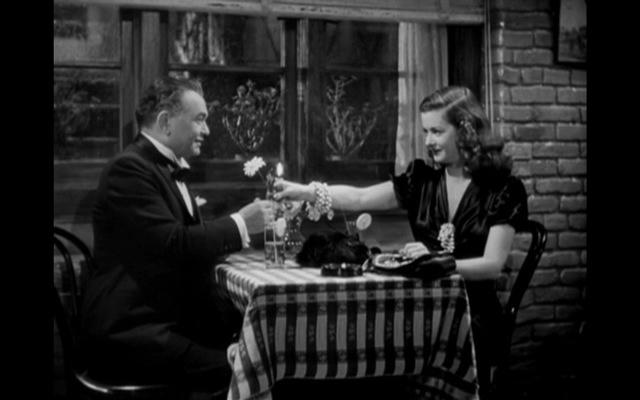
"So you won't forget me."
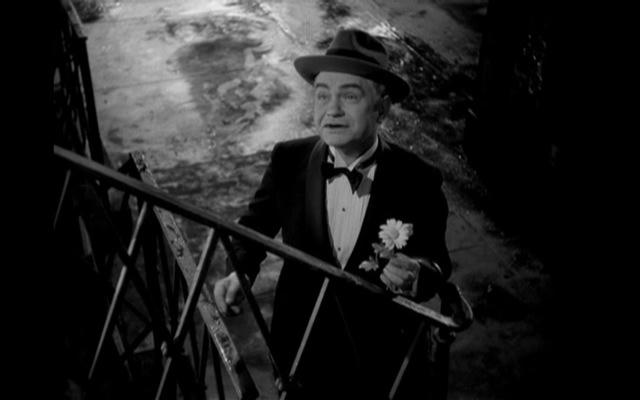
"Goodnight, Kitty."
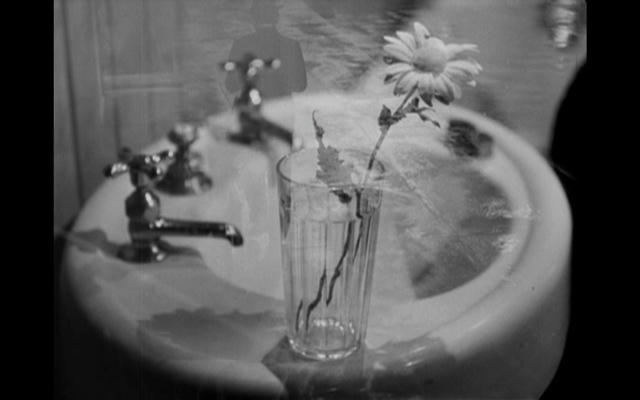
* cue bird like flute music *
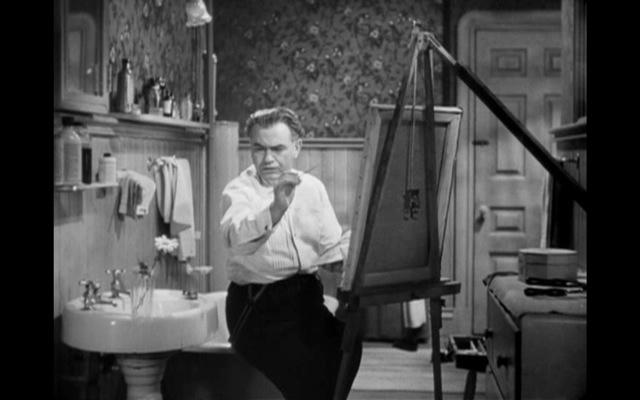
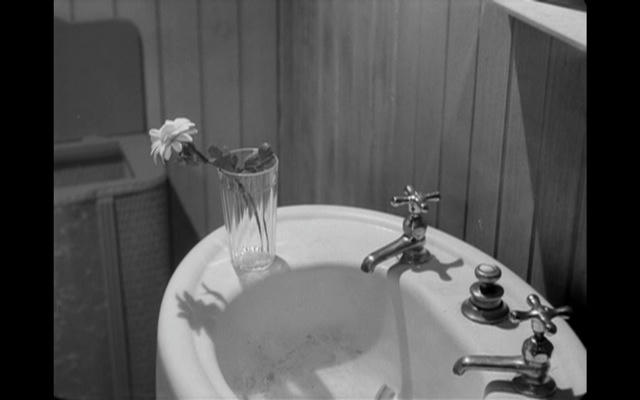
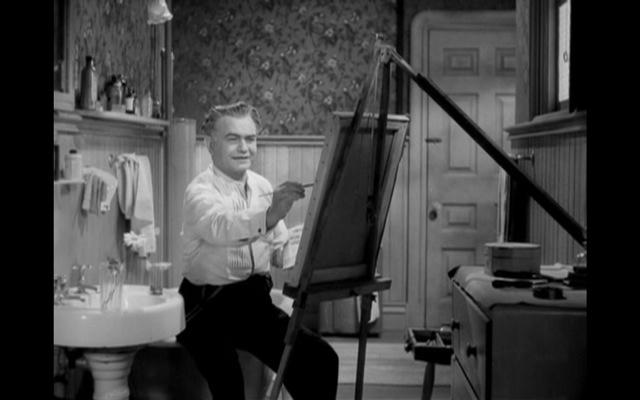
"Would you like to see what I did today?"
"Yes, I'd like to."
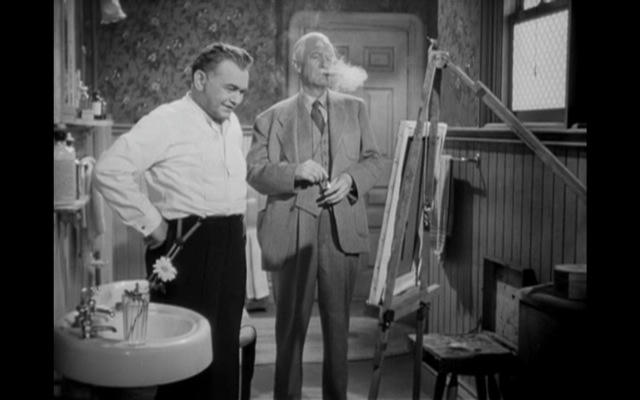
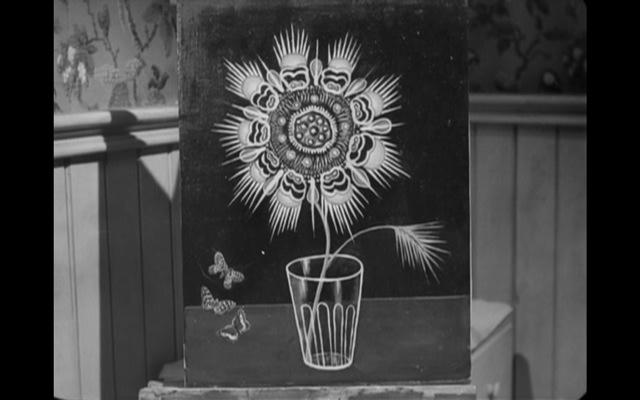
"Where did you find a flower like that?"

"You mean you see this.."

"When you look at that?..."
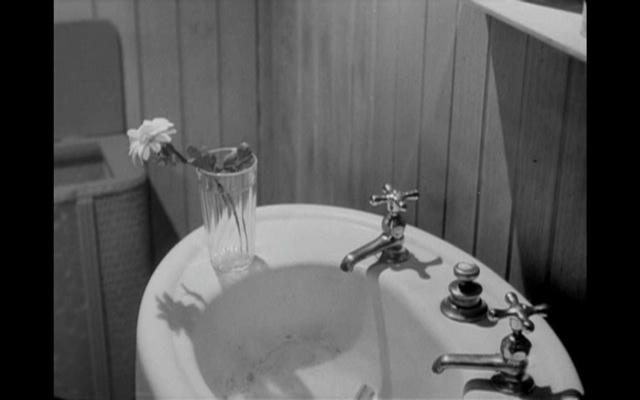
Lang, in an almost Hitchockian way (or Hitchcock, in almost Langian ways!) uses props as a means to convey psychological or emotional states. Here, the flower is used to represent Robinson's rosy-colored world after having met Kitty. The flower, to him, radiates much more liveliness and color, than to others, who see it wilting and dying.
In another example:
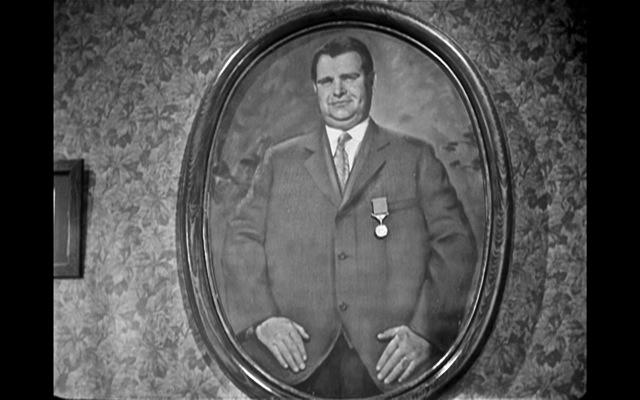
"Say did you paint this?"
"Great scott no, that's not a painting, that's mud, done by a photographer."
"Who is it?"
"The, uh, late departed."
"Ooh, your wife's former husband.."
"..Detective Sergeant Higgens."
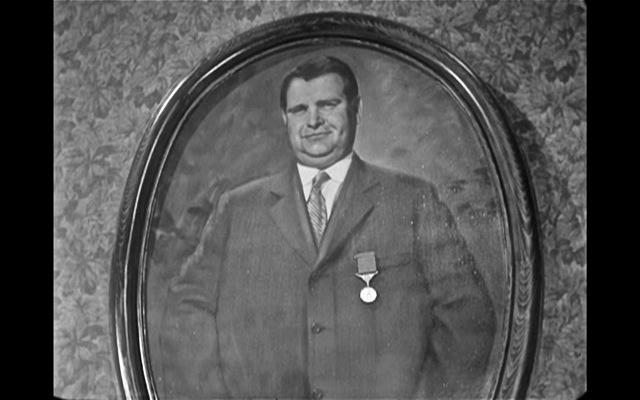
"..Oh my Higgens!"
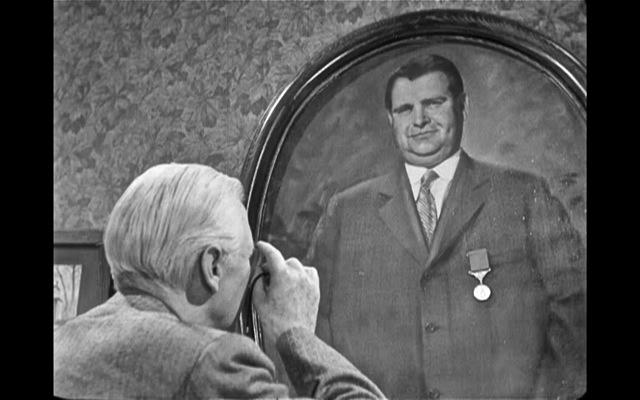
"Say, that's a real medal isn't it?"
"Yeeah, Adele got it."
"Your wife?"
"Yeah, after he was drowned in the East River. Jumped in to save a woman. Neither body was found."
Not only do I love the progression of shots, from long to medium, but the medal in conjunction with the dialogue is a subtle tip off point that the Mr. Sergeant Higgens is not actually dead, and he will reappear later in the film.
Lang's visual symbolism is always rather obvious, but man does it make his movies really fun to watch!
No comments:
Post a Comment